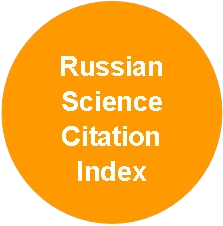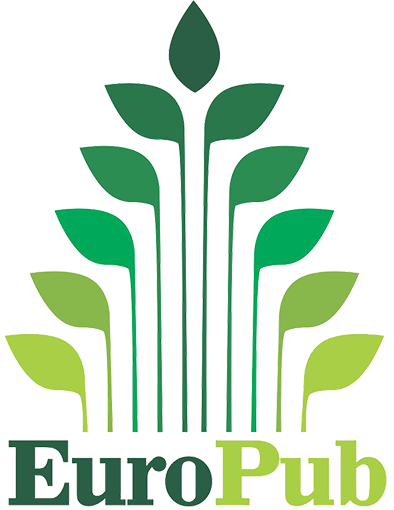Purification of Liquid Radioactive Waste with Activated Carbon from Sludge-Lignin
DOI:
https://doi.org/10.37482/0536-1036-2025-3-184-194Keywords:
adsorption properties, activated carbons, synthesis, sludge-lignin, radionuclidesAbstract
In this article, the authors have carried out a study of the synthesis of carbon sorbents from sludge-lignin by thermochemical activation and determination of their adsorption properties. Sludge-lignin is a large-tonnage waste generated during coagulation treatment of wastewater from pulp and paper mills. The promising development of technological solutions for waste disposal is complicated by the complex chemical composition of the sludge and the lack of practical demand for potential products that can be obtained as a result of its processing. One of the possible areas of use of by-products of processing is the synthesis of activated sorbents for wastewater treatment from heavy metals and radionuclides. To study the effect of independent parameters on the adsorption properties of activated carbons, an experiment has been conducted using a second-order rotatable central composite design. Based on experimental data, regression equations for the adsorption activity of iodine and methylene blue have been derived. The porous structure of the coal surface has been analysed using the ASAP 2020 MR automated system. The pore volumes of the activated sorbents from sludge-lingin have been determined using the Brunauer-Emmett-Teller and Barrett-Joyner-Halenda methods. During the experiment, optimal pyrolisis conditions have been identified: pyrolysis temperature 700 °C, pyrolysis duration 60 min and the activating agent dosage 180 %. This mode is economically advantageous for the formation of high-performance carbon sorbents due to the low consumption of alkali compared to other types of lignin. The authors have studied sorbents obtained under optimal conditions. The sorption properties have been analyzed by the spectrometric method with respect to various radionuclides (cesium, cobalt, strontium, etc.). Energy spectra have been constructed using the SpectraLine GP (Gamma Precision) software package, and the initial and final activity of radionuclides has been calculated. It has been determined that carbon sorbents obtained from sludge-lingin by thermochemical activation can be used for the selective extraction of certain radionuclides with an efficiency of up to 94 %.
Downloads
References
Bedmohata M.A., Chaudhari A.R., Singh S.P., Choudhary M.D. Adsorption Capacity of Activated Carbon Prepared by Chemical Activation of Lignin for the Removal of Methylene Blue Dye. International Journal of Advanced Research in Chemical Science (IJARCS), 2015, vol. 2, iss. 8, pp. 1–13.
Beletskaya M.G., Bogdanovich N.I., Makarevich N.A. Carbon Adsorbent Technology: Physico-Chemical Analysis of Activated Carbons. Arkhangelsk, Northern (Arctic) Federal University Publ., 2015. 96 p. (In Russ.).
Bogdanovich N.I. Pyrolysis of Technical Lignins. Lesnoy Zhurnal = Russian Forestry Journal, 1998, no. 2–3, pp. 120–132. (In Russ.).
Bogdanovich N.I., Kuznetsova L.N., Dobele G.V. New Reagents of Thermochemical Activation of Carbon Materials in the Synthesis of Adsorbents. Carbon Adsorbents: Proceedings of the 2nd International Seminar. Kemerovo, Institute of Coal and Coal Chemistry of the Siberian Branch of the Russian Academy of Sciences Publ., 2000, pp. 16–18. (In Russ.).
Celik A., Demirbaş A. Removal of Heavy Metal Ions from Aqueous Solutions via Adsorption onto Modified Lignin from Pulping Wastes. Energy Sources, 2005, vol. 27, iss. 12, pp. 1167–1177. https://doi.org/10.1080/00908310490479583
Chernysheva E.A., Nakhanovich V.S., Zajtseva A.A., Russavskaya N.V. Technology and Equipment for Obtaining Sulfur-Containing Sorbents Based on Lignin. Collection of Scientific Papers of the Angarsk State Technical University, 2016, no. 1, pp. 76–80. (In Russ.).
Chistyakov A.V., Tsodikov M.V. Methods for Preparing Carbon Sorbents from Lignin (Review). Russian Journal of Applied Chemistry, 2018, vol. 91, pp. 1090–1105. https://doi.org/10.1134/S1070427218070054
Elnakar H., Buchanan I.D. Pulp and Paper Mill Effluent Management. Water Environment Research, 2019, vol. 91, iss. 10, pp. 1069–1071. https://doi.org/10.1002/wer.1179
Irkutsk National Research Technical University. INRTU Scientists Will Present Several Waste Disposal Technologies from the Baikal Central Processing Plant at the International Ecological and Water Forum. Avaialble at: https://www.istu.edu/novosti/pub/45665 (accessed 5.08.24). (In Russ.).
Khorokhordin A.M., Rudakov O.Ya., Perzev V.T., Cherepakhina R.G., Rudakov O.B. Application of Slime-Lignin with Slaked Lime as an Organomineral Additive in Cement. Khimiya, fizika i mekhanika materialov, 2021, no. 2 (29), pp. 89–96. (In Russ.).
Lainer Yu.A., Malkov G.A., Tuzhilin A.S., Perekhoda S.P., Vetchinkina T.N. Prospects of Aluminum-Containing Waste Integrated Treatment with Production of Alumina, Coagulants and Construction Materials. Ekologiya i promyshlennost’ Rossii = Ecology and Industry of Russia, 2013, no. 4, pp. 10–15. (In Russ.). https://doi.org/10.18412/1816-0395-2013-4-10-15
Lityaeva Z.A., Gavrilov S.N. Combined Humate-Containing Reagent for Drilling Fluids. Patent RF no. 208751, 1997. (In Russ.).
Loginova (Kokina) E.S., Boykova T.E., Bogdanovich N.I., Vorontsov K.B., Adsorption of Cobalt Isotope from Liquid Radioactive Waste by Carbon Nanostructured Materials of Thermochemical Activation of Sludge-Lignin. Bezopasnost’ i okhrana truda v lesozagotovitel’nom i derevoobrabatyvayushchem proizvodstvakh = Occupational Health and Safety in Logging and Woodworking Industries, 2024, no. 3. https://doi.org/10.33920/pro-5-2403-04
Malnik V.V., Yamamuro M., Tomberg I.V., Molozhnikova E.V., Bukin Yu.S., Timoshkin O.A. Lacustrine, Wastewater, Interstitial and Fluvial Water Quality in the Southern Lake Baikal Region. Journal of Water & Health, 2022, vol. 20, iss. 1, pp. 23–40. https://doi.org/10.2166/wh.2021.064
Methodology for Measuring the Activity of Gamma-Emitting Nuclides in Counting Samples Using a Semiconducting Spectrometer. Certificate no. 582/04 on Certification Issued by D.I. Mendeleyev Institute for Metrology, 25.10.2004. (In Russ.).
Sedova E.L., Vorontsov K.B., Burkova S.A. Influence of Coagulation Treatment on the Efficiency of Lignin Containing Wastewater Purification. Lesnoy Zhurnal = Russian Forestry Journal, 2019, no. 4, pp. 159–167. (In Russ.). https://doi.org/10.17238/issn0536-1036.2019.4.159
Suhas, Carrott P.J.M., Ribeiro Carrott M.M.L. Lignin – from Natural Adsorbent to Activated Carbon: A Review. Bioresource Technology, 2007, vol. 98, iss. 12, pp. 2301–2312. https://doi.org/10.1016/j.biortech.2006.08.008
Thompson G., Swain J., Kay M., Forster C.F. The Treatment of Pulp and Paper Mill Effluent: A Review. Bioresource Technology, 2001, vol. 77, iss. 3, pp. 275–286. https://doi.org/10.1016/s0960-8524 (00)00060-2
Timofeeva S.S. Vermicomposting of Technical Waste and Their Biological Activity. Environmental Safety of the East Siberian Region: Proceedings of the All-Russian Scientific and Practical Conference. Irkutsk, 2003, pp. 17–21. (In Russ.).
Vorontsov K.B., Bogdanovich N.I., Sedova E.L., Solovyova P.V. Formation of Adsorption Properties of Carbon Nanostructured Materials by Thermochemical Activation of Sludge-Lignin. Lesnoy Zhurnal = Russian Forestry Journal, 2021, no. 4, pp. 181–188. (In Russ.). https://doi.org/10.37482/0536-1036-2021-4-181-189













